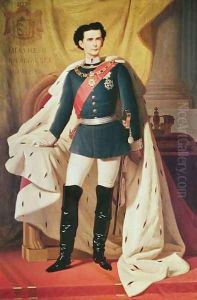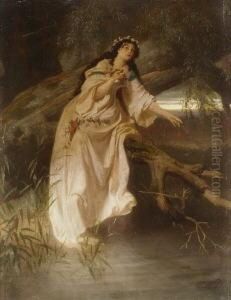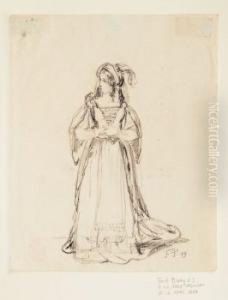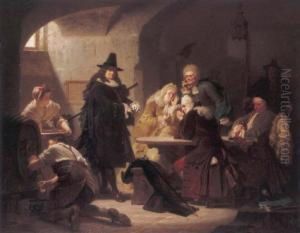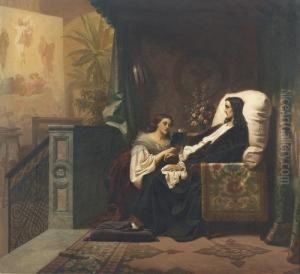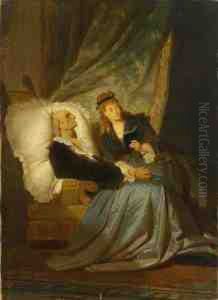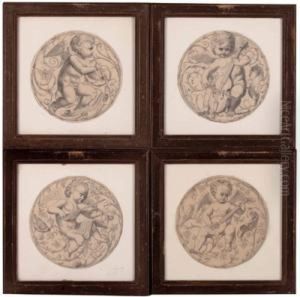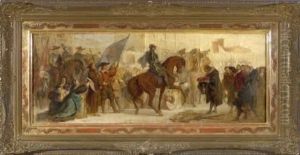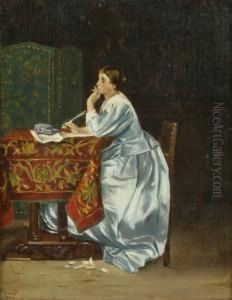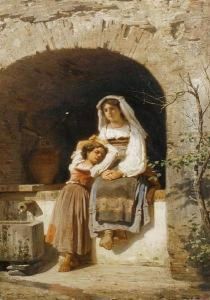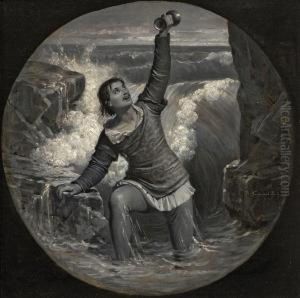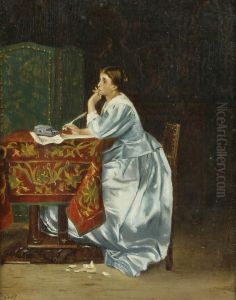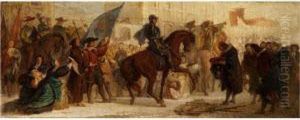Ferdinand II Piloty Paintings
Ferdinand Piloty II was a prominent German painter and illustrator, born in Munich in 1867. He hailed from a distinguished family of artists; his grandfather, Ferdinand Piloty I, was a celebrated engraver, and his father, Karl von Piloty, was one of the most renowned historical painters of his time. This rich artistic heritage deeply influenced Ferdinand II's career and style.
Ferdinand II initially trained under his father's tutelage, absorbing the meticulous techniques and historical themes that characterized the Piloty family's work. His education continued at the Academy of Fine Arts Munich, where he further honed his skills and developed his unique artistic voice. Piloty's early works were marked by a keen attention to detail, a vivid use of color, and a preference for historical and mythological subjects, reflecting the influence of his father and the broader trends in 19th-century German art.
Throughout his career, Piloty enjoyed considerable success and recognition. He was known not only for his historical paintings but also for his portraits and genre scenes, which displayed his versatility as an artist. His ability to capture the essence of his subjects and his meticulous approach to composition and color made his works highly sought after during his lifetime.
In addition to his painting, Ferdinand II Piloty made significant contributions as an illustrator, working on various projects that included book illustrations and designs for theatrical productions. This aspect of his career highlights his adaptability and his keen eye for narrative detail.
Despite the shadow of his father's towering legacy, Ferdinand II carved out his own niche in the art world, blending the traditional with the innovative. His works were exhibited widely, both in Germany and internationally, cementing his reputation as a leading figure in the late 19th and early 20th-century German art scene.
Ferdinand II Piloty's legacy is not simply tied to his lineage but is also rooted in his contributions to German art and culture. His dedication to his craft and his ability to navigate the changing tastes and styles of his time ensured his place in art history. He passed away in 1942, leaving behind a body of work that continues to be celebrated for its beauty, technical skill, and historical significance.
